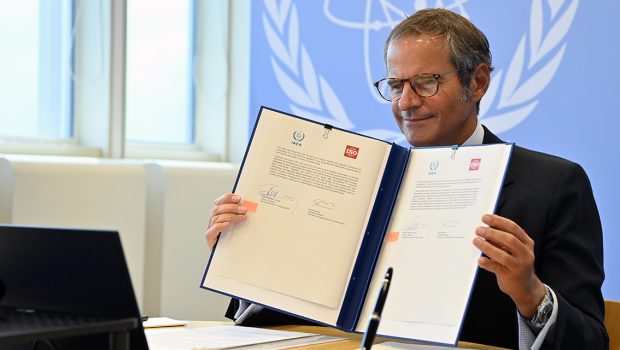Standards for Safe and Secure Use of Nuclear Technology: IAEA and ISO Reaffirm Collaboration
The IAEA and the International Organization for Standardization (ISO) have today reaffirmed their commitment to continue working together in the development of international standards that ensure nuclear technology, which provides indispensable benefits to the world, is used in a safe and secure manner.
Their renewed commitment and partnership highlights four decades of cooperation, with 2021 marking the 40th anniversary of the signature of the Memorandum of Understanding (MoU) between the IAEA and ISO. The 1981 MoU set out guidelines for their cooperation and regular consultation on matters of common interest. Today’s reaffirmation builds on their existing robust cooperation in the development of high quality and user-friendly internationally agreed standards for users globally. Though both organisations have their own set of standards, in areas of common interest relating to nuclear technology experts from each organization contribute to the development of the other’s standards.
“Although the IAEA and ISO are two quite different organizations, the very important work we do in the area of international standards is complementary,” said Rafael Mariano Grossi, Director General of the IAEA. “Forty years of successful collaboration is an achievement to celebrate. It is also a chance to look ahead to the work we will do together to ensure international standards remain fit for purpose and nuclear technologies continue to be used safely for everything from curing cancer to using nuclear energy that helps to mitigate and adapt to climate change.”
“As our understanding of the potential of atomic energy continues to grow, collaboration between our two organizations is needed more than ever,” said Sergio Mujica, Secretary-General of ISO. "In meeting these demands, and in transitioning away from a hydrocarbon economy, there is a clear case for the benefits of nuclear power in combination with renewable sources of energy. In spreading this technology, the work of the IAEA and the role of international standards remain essential.”
The IAEA is the world’s centre for cooperation in the nuclear field. Its work includes the establishment or adoption of safety standards for protecting people and the environment from harmful effects of ionizing radiation.
ISO is an independent, non-governmental international organization with a membership of 165 national standards bodies. Through its members, it brings together experts to share knowledge and develop voluntary, consensus-based, market-relevant international standards that support innovation and provide solutions to global challenges.
ISO experts who serve on the IAEA’s Safety Standards Committees contribute to the development and review of IAEA safety standards on nuclear safety, waste safety, radiation safety, transport safety and emergency preparedness and response. Similarly, IAEA experts participate in ISO technical committees that cover topics such as nuclear energy, quality management, and air and water quality. Recently IAEA experts have contributed to the development of ISO standards for the nuclear supply chain and for radium in drinking water.
In a working session today, which followed the signature of their joint statement, ISO and IAEA representatives discussed ways of further strengthening the relationship between the two organizations, including ways of improving the practical implementation of the MOU and identifying new topics for standards development.
Lydie Evrard, IAEA Deputy Director General and Head of the Department of Nuclear Safety and Security, said: “Our collaboration is and will remain essential as a means of reaching a wider audience in our Member States. The volume of work that ISO and the IAEA undertake in the area of international standards is vast and is expected to continue to grow in the future. Therefore, it is important that we prioritize our resources, so that we can direct our collaborative efforts to provide the greatest benefit for the users of all our standards, in particular for protecting people and the environment.”








Gloss